Jules Bianchi: 'One of the most promising drivers in Formula 1'
- Published
Jules Bianchi has died aged 25 as a result of head injuries sustained in a crash during the 2014 Japanese Grand Prix.
The Frenchman was one of the most promising of a new generation of Formula 1 drivers.
Bianchi, who was part of the Ferrari young driver programme, lost his battle on the night of Friday, 17 July - nine months after the crash.
The accident that led to Bianchi's death came in an unfortunate combination of circumstances in a difficult wet race at the Suzuka track.
During the lap before Bianchi's accident, Sauber's Adrian Sutil had crashed at the fast, uphill Dunlop corner. A recovery vehicle headed out to pick the car up and that section of track was put under double waved yellow caution flags, meaning a hazard bad enough that drivers should be prepared to stop.
Read more on Bianchi's death | |
|---|---|
On the next lap, on worn tyres, Bianchi arrived at the corner and lost control, and the car speared off the track and collided with the recovery vehicle, which destroyed the Marussia's roll hoop, a device that protects the driver's head.
Bianchi suffered massive head injuries. After an operation, he was placed in intensive care but he succumbed three quarters of a year later.
Potential
In only 34 races he had done enough with the back-of-the-grid Marussia team to suggest he had a bright future in the sport.
Jules Bianchi |
|---|
Born: 3 August 1989 in Nice, France |
Formula 1 debut: 2013 Australian Grand Prix, finishing 15th |
Races: 34 |
Highest finish: Ninth at the 2014 Monaco Grand Prix |
It is never easy for a new driver in a struggling team to prove his worth, but Bianchi had done so by producing performances that would not normally be expected of the car, and outclassing his team-mate, Englishman Max Chilton.
There were a number of impressive drives from Bianchi, but the most high profile was his taking ninth place in the Monaco Grand Prix in May last year.
In doing so, he scored Marussia's first and only points, as the team folded at the end of 2014. They now race as Manor.
It was too early in Bianchi's career to judge his ultimate potential, and whether he could have gone on to become a race winner and even world champion. But the signs were there that he was set for a significant career at the highest level of the sport.
Ferrari signed four-time world champion Sebastian Vettel to replace the departing Fernando Alonso in 2015, but they had earmarked Bianchi as the man who would probably drive a third car for the team, should they be required to run one if the grid dropped below 20 cars.
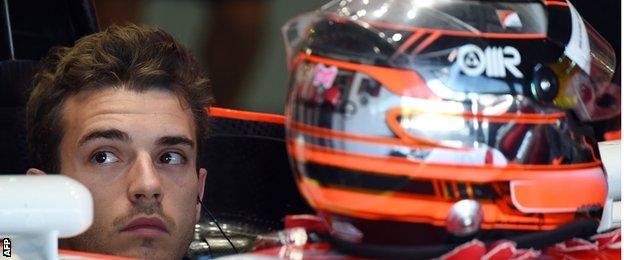
Jules Bianchi, who was part of the Ferrari young driver programme, made his Formula 1 debut in 2013 at the Australian Grand Prix
Ferrari's former president Luca Di Montezemolo said: "This boy was born with us, and we thought of him as our driver of the future... he would have been perfect for the coming years."
Bianchi came from a racing family, and it is the second time they have been touched by tragedy. His grand-uncle Lucien Bianchi competed in 19 F1 grands prix, with a best finish of third at Monaco in 1968, and won the 1968 Le Mans 24 Hours, before being killed testing for the race the following year.

Jules Bianchi started his career in F1 as a test and reserve driver for Ferrari
Bianchi's career in F1 started in 2011, when Ferrari signed him up to be their test and reserve driver, although he had had a relationship with the team for at least two years before that.
Ferrari loaned him out to fulfil the same role for Force India in 2012, before they facilitated his move to Marussia, to whom they supplied engines, for his debut season in 2013.
Then Ferrari decided against promoting Bianchi to partner Alonso in 2014, preferring to sign for a second time Finn Kimi Raikkonen, who won the world title for the team in 2007.
What now for F1?
His death has led to a period of introspection in a sport that had never stopped trying to improve safety since the triple world champion Ayrton Senna was killed at the 1994 San Marino Grand Prix, the last F1 race driver to lose his life.
Alonso, a two-time world champion and close to Bianchi, said: "This is a reminder for us that this is very dangerous, for the spectators as well. We are here because we like our job and we are ready to take the risk because we need the adrenaline somehow as well. But we cannot make mistakes."
His colleagues acknowledged Bianchi's misfortune, at the same time expressing a belief that he would want them to go on, and a hope that F1 can apply whatever lessons emerge from the inquiry into his death to make the sport that will always be dangerous safer again.
As with Senna's death, safety changes have already been put in place, aimed at ensuring such an incident can never happen again.
How the incident unfolded |
|---|
Adrian Sutil aquaplanes and crashes into the tyre barriers on lap 43 |
Jules Bianchi hits the recovery vehicle attending Sutil's crash |
The medical car and ambulance are deployed on lap 45 |
The race is red-flagged and declared over, with the race result counted back to after 44 laps |
..jpg)
Jules Bianchi pictured with his father Philippe, was French karting champion and won Formula Renault 2.0 at his first attempt in 2007
.jpg)
He was tipped by many to be a future star for Ferrari
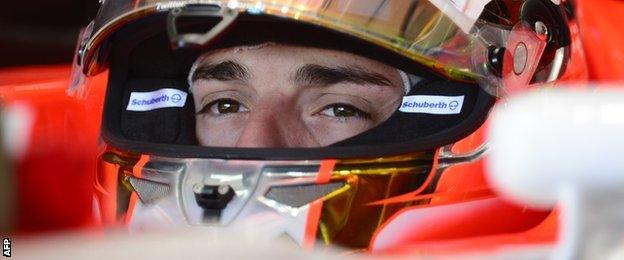
The struggling Marussia team saw Bianchi produce some stunning performances
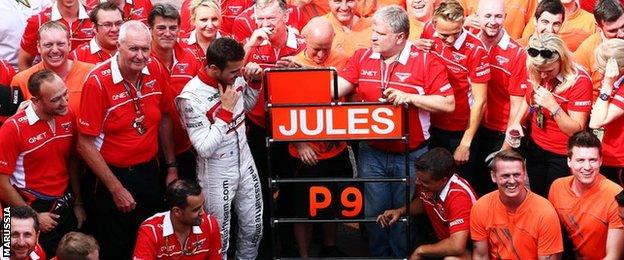
Jules Bianchi's highest finish was ninth at the Monaco Grand Prix last year
.jpg)
Bianchi was said to have had "a bright future in Formula 1"
- Published18 July 2015
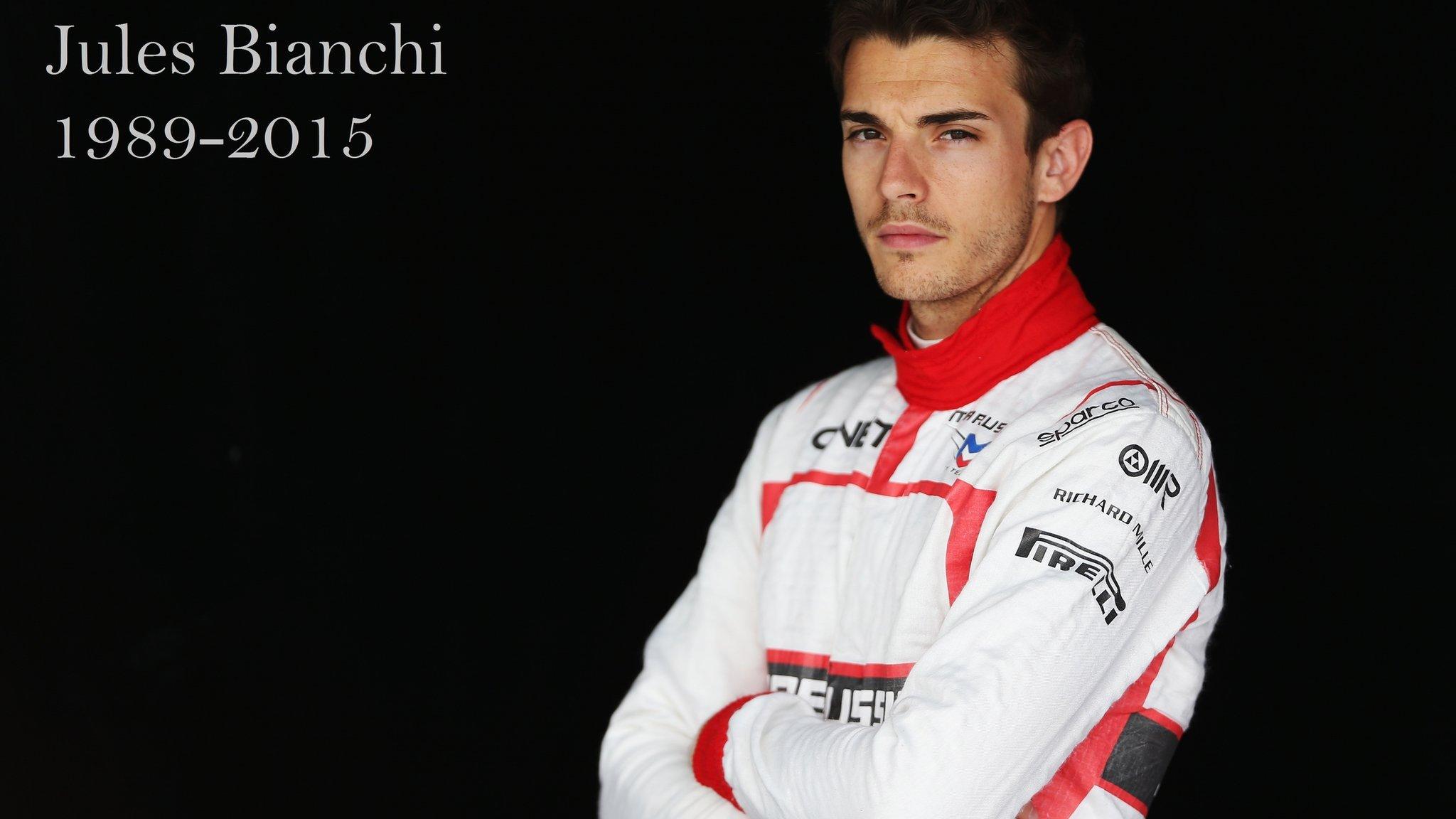
- Published18 July 2015
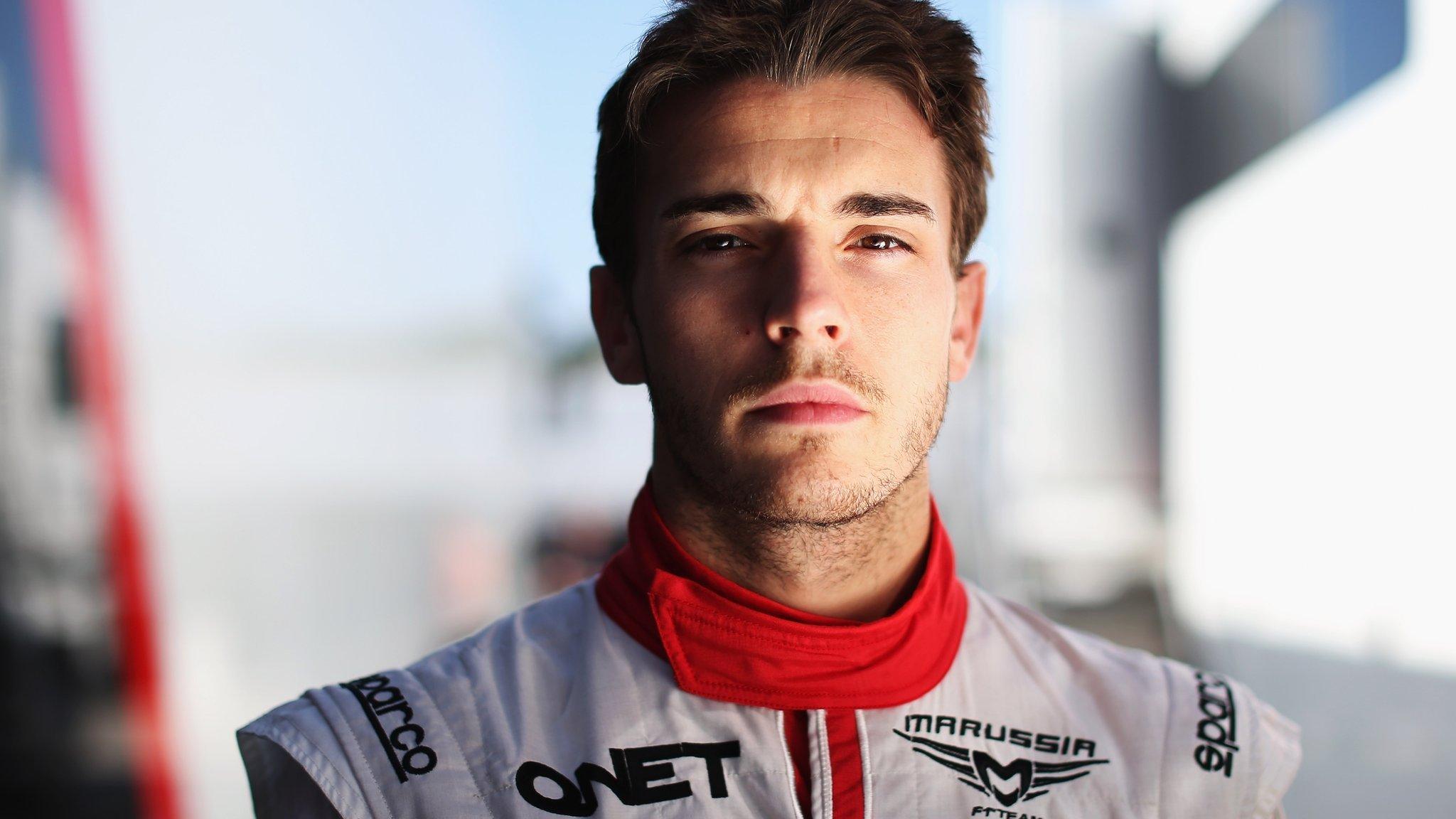
- Published18 July 2015

- Published18 July 2015
- Published8 October 2014